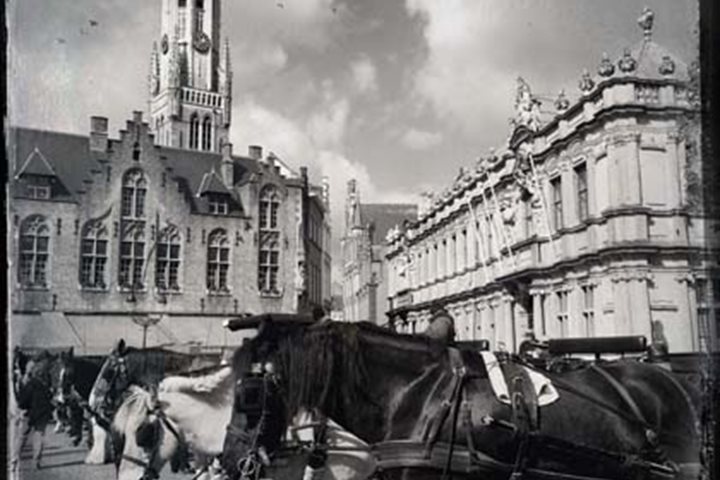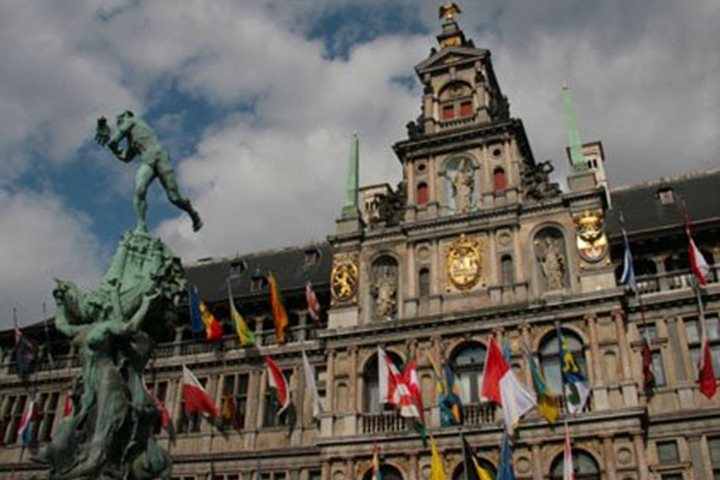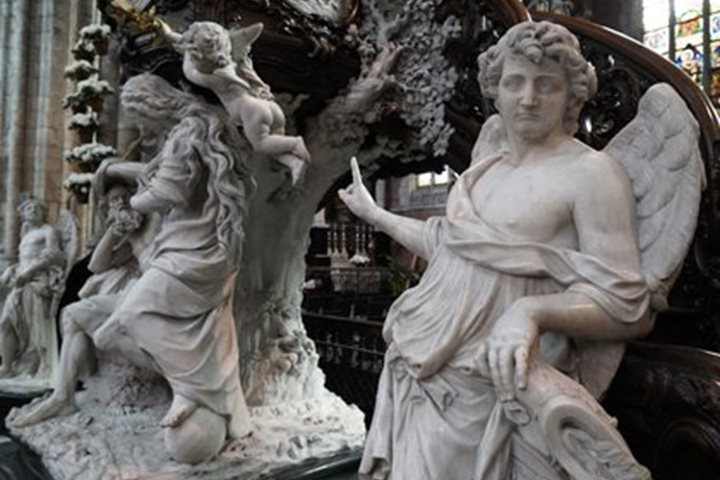We had steamed through the night and into the early afternoon to reach our first destination in the Low Countries. The morning found us just outside of the Wadden Sea, a shallow protected body of water connected to the North Sea, significant in many ways and a UNESCO World Heritage Site. It’s known for its biological diversity with an astonishing abundance of bird life and a complex system of islands, wetlands and rich marine life. In total it comprises the world’s largest intact system of intertidal sand and mud flats. It's these shallow tidal flats and accompanying dunes and islands that also makes navigation through these waters challenging. Thankfully, centuries of maritime history here have left a well-charted course for us to navigate.
As we neared the outer bank and largest islands in the Wadden Sea we began seeing evidence of the bird life in the form of large flocks of gulls, terns and ducks. The gulls and terns concentrated in the wake of an active shrimp boat trawling the shallow waters. We wound our way between the largest island of West Terscheling and Vlieland and into the Wadden itself. Our path, well marked with buoys, ensured we were en route to Harlingen. This extremely quaint and inviting municipality can trace its roots back to a Viking settlement in the first century and was “incorporated,” to use a more modern term, in 1234. The history of this community is far too rich and diverse to treat properly in this synopsis of our day but seeing as the alternate name for Harlingen is “City of Memorial Monuments,” the history is written on the streets.
The weather was mild and pleasant and National Geographic Explorer was greeted with quite some fanfare and a large crowd of onlookers. The mayor, Roel Sluiter, and harbormaster of Harlingen greeted our ship and her captain, Ben Lyons, to present a port of call placard to commemorate our arrival as the first cruise vessel to call on Harlingen in the city’s long history. This placard was a specially crafted ceramic tile depicting the port and our fine ship.
Shortly following the brief ceremony we set out to see the sites of this medieval port. Two-thirds of our compliment of guests chose to enter the town in a bit more dramatic fashion than merely strolling down the gangway and walking along the quaint canals and streets. In classic Lindblad style we set out in our versatile Zodiac fleet and made our way through the historic canals. The warm welcome from the town folk continued as we all were taken in by the sights and feel of this place. The most noteworthy aspect of our cruise through Harlingen was passing through one of the two locks bordering the canals, a typical Dutch feature, long in place to manage the influx of tidal waters from inundating the town. Arriving at a dock we disembarked the Zodiacs to stroll the town and attend an organ recital at the church by Eeuvi Zijlstra.
After a lovely afternoon in Harlingen we returned for dinner on board. The day concluded with a live performance in the lounge arranged by our ethnomusicologist, Jacob Edgar, from local Frisian singer/songwriter Nynkee Laverman and her husband in the lounge. All combined it was an incredible start to our explorations of the Low Countries.









